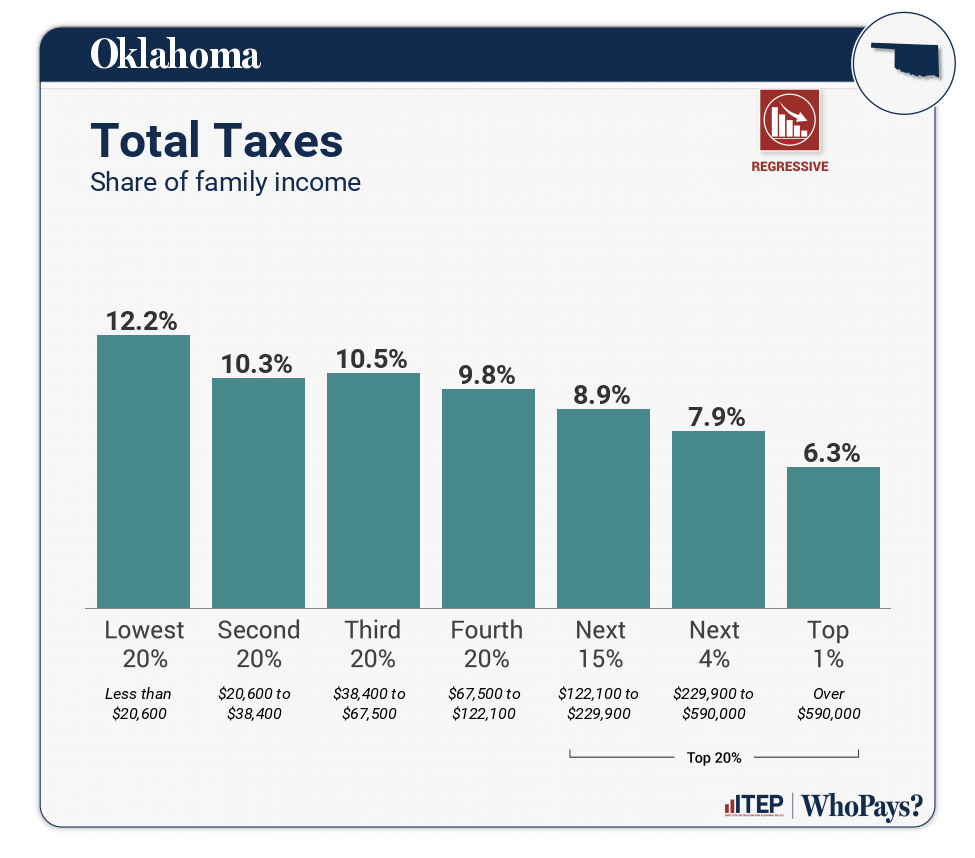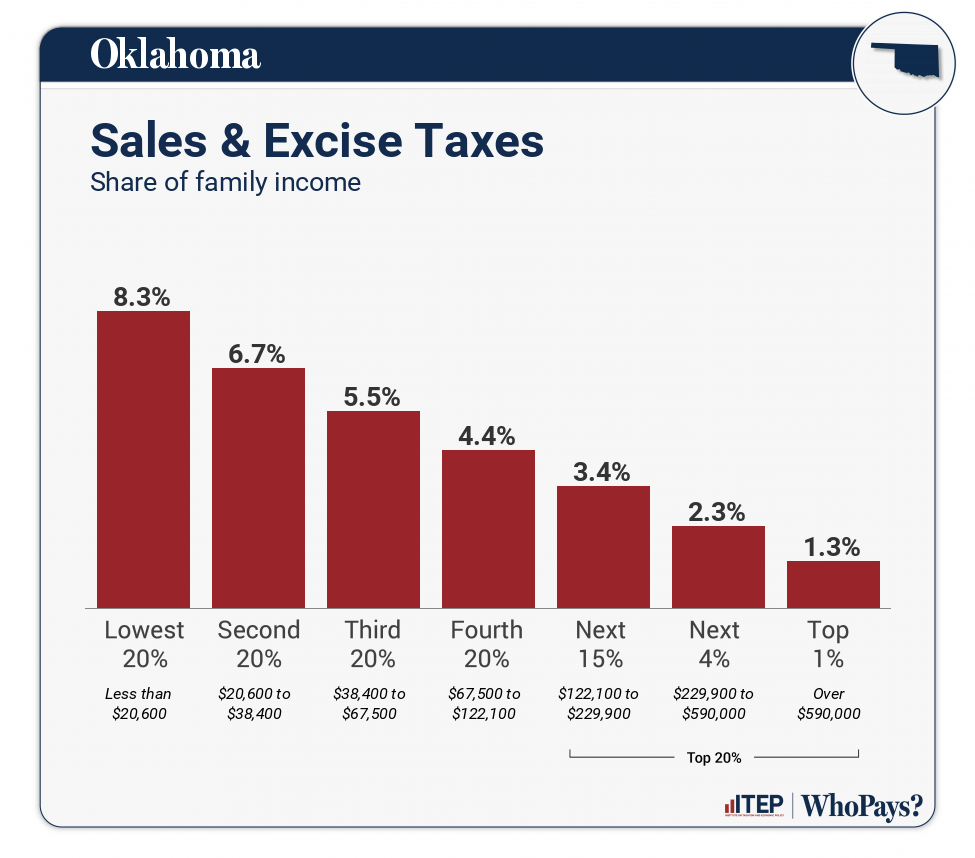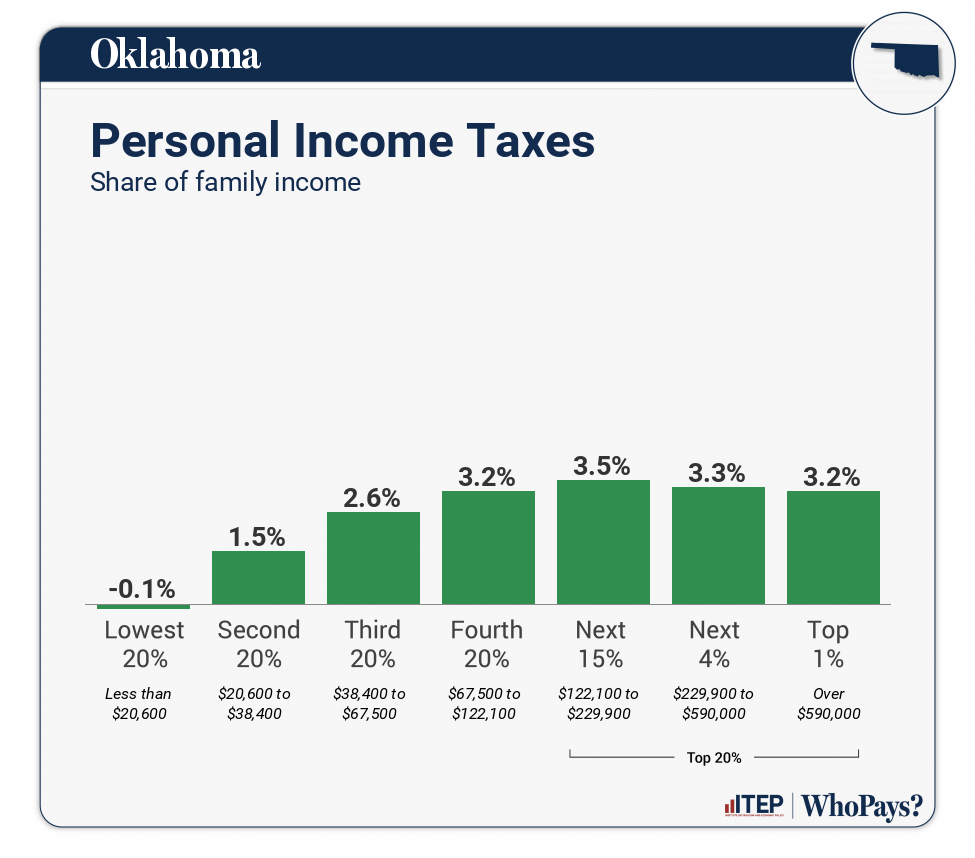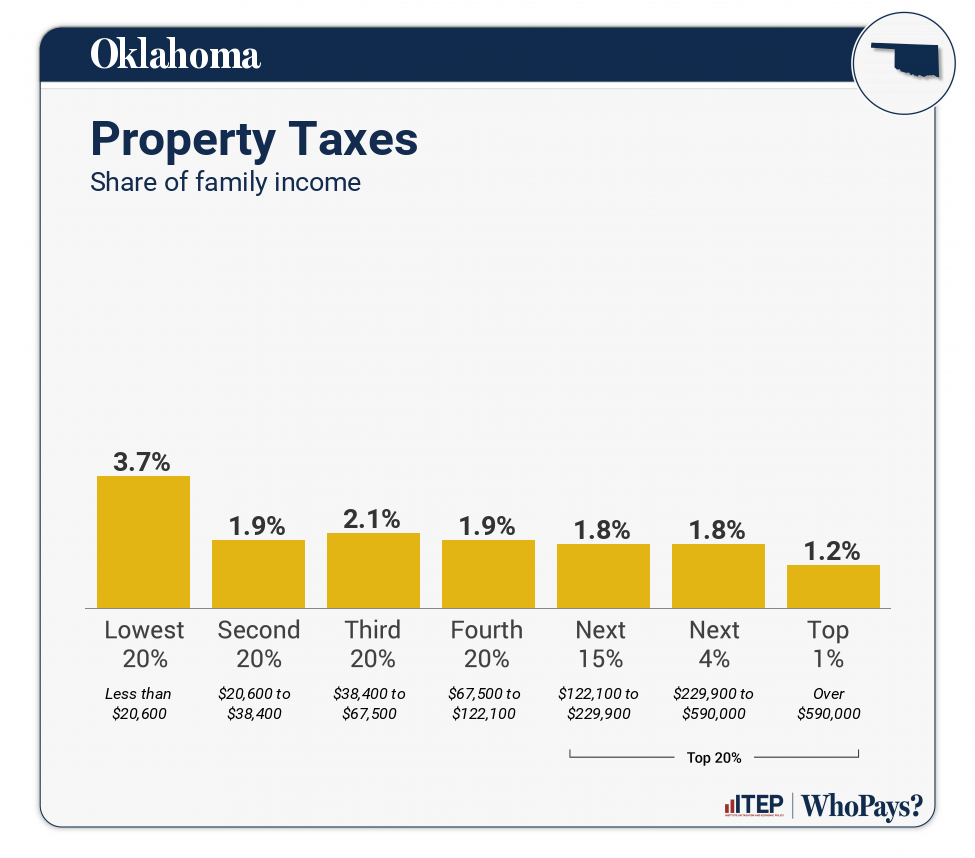Oklahoma: Who Pays? 7th Edition

Oklahoma
Download PDF
State and local tax shares of family income
| Top 20% | |||||||
| Income Group | Lowest 20% | Second 20% | Middle 20% | Fourth 20% | Next 15% | Next 4% | Top 1% |
| Income Range | Less than $20,600 | $20,600 to $38,400 | $38,400 to $67,500 | $67,500 to $122,100 | $122,100 to $229,900 | $229,900 to $590,000 | Over $590,000 |
| Average Income in Group | $11,300 | $28,900 | $52,300 | $93,700 | $155,100 | $328,200 | $1,130,400 |
| Sales & Excise Taxes | 8.3% | 6.7% | 5.5% | 4.4% | 3.4% | 2.3% | 1.3% |
| General Sales–Individuals | 3.8% | 3.9% | 3.4% | 2.8% | 2.1% | 1.3% | 0.5% |
| Other Sales & Excise–Ind | 3.1% | 1.6% | 1% | 0.6% | 0.4% | 0.2% | 0.1% |
| Sales & Excise–Business | 1.4% | 1.2% | 1.1% | 1% | 0.8% | 0.8% | 0.7% |
| Property Taxes | 3.7% | 1.9% | 2.1% | 1.9% | 1.8% | 1.8% | 1.2% |
| Home, Rent, Car–Individuals | 3.2% | 1.7% | 1.9% | 1.7% | 1.5% | 1.2% | 0.6% |
| Other Property Taxes | 0.4% | 0.2% | 0.3% | 0.3% | 0.3% | 0.6% | 0.7% |
| Income Taxes | -0.1% | 1.5% | 2.6% | 3.2% | 3.6% | 3.4% | 3.3% |
| Personal Income Taxes | -0.1% | 1.5% | 2.6% | 3.2% | 3.5% | 3.3% | 3.2% |
| Corporate Income Taxes | 0% | 0% | 0% | 0% | 0% | 0% | 0.1% |
| Other Taxes | 0.3% | 0.2% | 0.2% | 0.2% | 0.2% | 0.4% | 0.5% |
| TOTAL TAXES | 12.2% | 10.3% | 10.5% | 9.8% | 8.9% | 7.9% | 6.3% |
| Individual figures may not sum to totals due to rounding. | |||||||
ITEP Tax Inequality Index
ITEP’s Tax Inequality Index measures the effects of each state’s tax system on income inequality. According to this measure, Oklahoma has the 16th most regressive state and local tax system in the country. Income disparities are larger in Oklahoma after state and local taxes are collected than before. (See Appendix B for state-by-state rankings and the report methodology for additional detail.)
Tax features driving the data in Oklahoma
|
Graduated personal income tax structure, however top rate kicks in at $7,200 (single) so virtually flat
Refundable tax credit to reduce the impact of its sales tax on groceries
Refundable Earned Income Tax Credit (EITC)
Provides a Child Tax Credit (CTC)
|
|
|
No property tax “circuit breaker” credit for low-income, non-senior taxpayers
Real estate transfer tax does not include higher rate on high-value sales
Offers exclusion for gains from sales of certain Oklahoma-based property
Does not use combined reporting as part of its corporate income tax
Comparatively high combined state and local sales tax rate
Nonrefundable Child Tax Credit (CTC) limited in reach
Comparatively low Earned Income Tax Credit (EITC)
Does not levy a tax on estates or inheritances
State sales tax base includes groceries
Local sales tax bases include groceries
|




